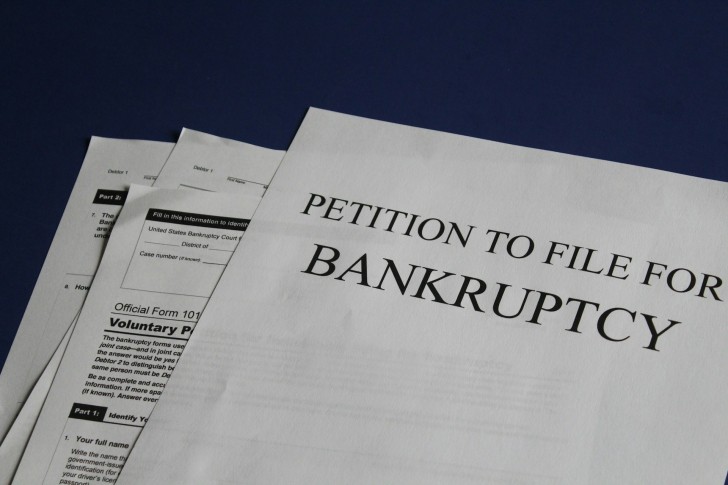If you’re drowning in debt and searching for a fresh financial start, filing for Chapter 7 Bankruptcy in Arizona might be the best path forward. This legal process allows individuals to eliminate most unsecured debts — like credit cards, payday loans, or medical bills — while keeping essential property protected through bankruptcy exemptions.
This guide explains how Chapter 7 bankruptcy works, who qualifies, and how to prepare if you plan to file in Arizona.
What Is Chapter 7 Bankruptcy?
Chapter 7 bankruptcy is sometimes called liquidation bankruptcy because a court-appointed trustee may sell non-exempt property to repay creditors. The good news? Most people who file keep everything they own thanks to Arizona’s generous exemption laws.
Once your case is filed, the court automatically issues an automatic stay, which immediately stops:
- Creditor phone calls and collection letters
- Wage garnishments
- Foreclosure or repossession actions
After the process ends, your remaining unsecured debts are discharged, giving you a clean slate.
Eligibility and the Chapter 7 Means Test
Not everyone qualifies for Chapter 7 Bankruptcy in Arizona. To ensure fairness, the federal government uses the means test to determine eligibility.
This test compares your household income to the state’s median income for your family size.
- Below median: You automatically qualify.
- Above median: You can still qualify after deducting essential living expenses such as rent, food, and utilities.
If you’re unsure about your eligibility, a bankruptcy attorney can calculate the test accurately and help you decide whether Chapter 7 or Chapter 13 is the better option.
The Chapter 7 Bankruptcy Process
Filing for Chapter 7 bankruptcy involves several important steps:
- Credit Counseling: Complete a mandatory counseling session from an approved agency.
- Prepare and File Your Petition: You’ll submit detailed information about your income, debts, and assets to the bankruptcy court.
- Automatic Stay Begins: All collection actions must stop immediately.
- Appointment of Trustee: The Chapter 7 trustee reviews your case and ensures your documents are accurate.
- 341 Meeting of Creditors: A short hearing (usually less than 10 minutes) where the trustee may ask questions about your finances.
- Debt Discharge: In most cases, your eligible debts are wiped out within 3–4 months of filing.
This process is relatively quick and provides immediate relief from creditor pressure.
Arizona Bankruptcy Exemptions
Arizona has its own bankruptcy exemption laws that determine what property you can keep. Since the state has “opted out” of federal exemptions, residents must use state-specific protections.
Here are some common Arizona bankruptcy exemptions:
- Homestead exemption: Protects equity in your primary residence up to the state limit.
- Vehicle exemption: Lets you keep one car up to a certain value.
- Personal property: Covers clothing, furniture, and household goods.
- Tools of the trade: Protect work equipment necessary for your livelihood.
These exemptions allow you to maintain stability while pursuing debt relief through bankruptcy.
Debt Relief Alternatives
Before filing for Chapter 7 Bankruptcy in Arizona, it’s smart to explore other debt relief options. You might consider:
- Chapter 13 bankruptcy: Reorganizes debt into a manageable repayment plan.
- Debt consolidation loans: Combine multiple debts into one payment at a lower interest rate.
- Negotiation or settlement: Work directly with creditors to reduce what you owe.
If none of these solutions provide enough relief, Chapter 7 bankruptcy may be your best chance to restart financially.
What Happens to Your Property and Debts?
A common worry for filers is losing their home or vehicle. In most cases, bankruptcy exemptions protect these assets. You can also reaffirm certain secured debts (like a car loan) if you want to keep paying and retain the property.
Most unsecured debts including medical bills, personal loans, and credit cards — are discharged. However, certain debts like student loans, child support, and recent taxes generally cannot be wiped out.
Why You Need a Bankruptcy Attorney
Filing for bankruptcy on your own can be stressful and risky. Working with a trusted bankruptcy attorney ensures you meet every legal requirement and protect as much property as possible.
An experienced lawyer can:
- Review your eligibility under the means test
- File accurate paperwork with the court
- Guide you through trustee meetings
- Explain Arizona bankruptcy laws and exemptions clearly
When hiring a bankruptcy specialist, look for one experienced in Chapter 7 cases who offers transparent pricing and genuine client support.
How to File Chapter 7 Bankruptcy
Here’s a simplified breakdown of how to file Chapter 7 bankruptcy:
- Collect all financial documents (tax returns, pay stubs, debts, and bank statements).
- Complete a credit counseling course.
- File your petition with the bankruptcy court.
- Attend your meeting of creditors (341 hearing).
- Complete a debtor education course before discharge.
- Receive your discharge and start rebuilding your credit.
After completing these steps, most filers experience immediate financial relief and peace of mind.
Life After Bankruptcy
Once your Chapter 7 discharge is granted, you’ll have a clean slate — free from most debts. Although your credit score might dip initially, it often improves within a year or two.
To rebuild credit after bankruptcy:
- Pay bills on time every month.
- Keep credit utilization low.
- Review your credit report regularly.
- Save a small emergency fund for stability.
Responsible money habits will help you regain lenders’ trust and secure a stronger financial foundation.
Final Thoughts
Filing Chapter 7 Bankruptcy in Arizona can be a life-changing decision if you’re overwhelmed by debt. Understanding the Chapter 7 bankruptcy process, state exemption laws, and means test requirements can help you make the right move toward financial recovery.
Whether you’re exploring debt relief options or ready to begin your case, working with a qualified bankruptcy attorney ensures the process is smooth, compliant, and successful.
 Editorial staff
Editorial staff

 Editorial staff
Editorial staff


